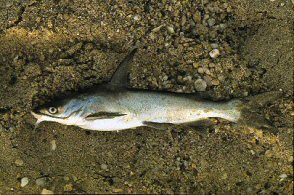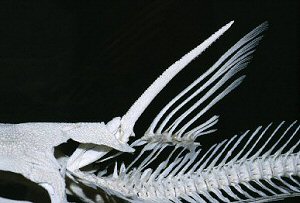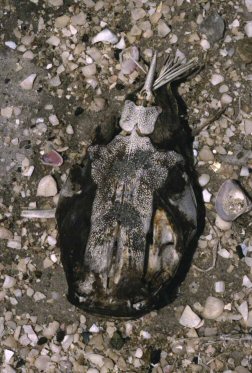SCOTCAT.COM
your internet guide to all things catfish
| The Crucifix Catfish | ||||||||
by Allan James |
||||||||
Sciades proops
The underside of the skull covering has a bony structure which can be seen when all the flesh and soft parts are removed. It then looks like a crucifix or like a painting of Christ crucified, and is surrounded by a Weberian bone in form of a halo. The upper rough part of the skull roof which is also visible on the living fish, looks like a Monk with a cowl and hood and his arms outstretched in prayer. Others see this as a Roman soldier with armour on his chest and the dorsal fin spine is the lance which he opened up Christs side.
The pictures depicted in this article are from Ann & Danny Blundells trip to the Margarita Islands just of the North Coast of Venezuela and a popular destination for tourists from the United Kingdom. I am indebted to Danny who took these pictures and who is himself a very accomplished photographer, and treasurer of the Catfish Study Group. Below are the rest of the images in this article. I have arranged them in thumbnail fashion and you can click on them for a larger image. They are all the Copyright of D. Blundell except for the map of Venezuela. For a mini factsheet on this species, go here
|
If you would like to contribute an article, please e-mail me. You will of course be credited for your work.
If you would like to donate any denomination of money to the site just click the above link button. All proceeds will go to running the site and hopefully to keep it going for a few years yet.
Print or e-mail this factsheet below








